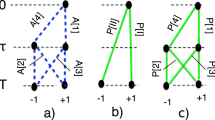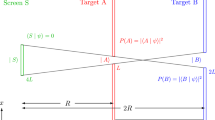Abstract
ERRORS that have once appeared in print have a way of turning up in the most unexpected places. As Dr. Karl Darrow's interesting article on quantum mechanics in Review of Modern Physics, 6, 23, January 1934, is sure to be very widely read in Great Britain, it is not inopportune to refer to an old mistake that he repeats. He states that optical paths are routes sometimes of minimum and sometimes of maximum time, and that for this reason it is appropriate to refer to them simply as stationary paths. His foundation is wrong though his conclusion is right. The facts are that the time happens to be a minimum when the path does not include an image of an end point of the range considered, but that if the path includes such an image, the time is neither a maximum nor a minimum—it is simply stationary. Thus in Fig. 1, if A, the image of A, is an internal point of the path interval APB, so that the optical lengths APA and AQA are equal, the path APGB is obviously longer and the path AQDB obviously shorter than the stationary path APA B. It is clearly a trivial matter to demonstrate that no given optical path is ever a maximum.
This is a preview of subscription content, access via your institution
Access options
Subscribe to this journal
Receive 51 print issues and online access
$199.00 per year
only $3.90 per issue
Buy this article
- Purchase on Springer Link
- Instant access to full article PDF
Prices may be subject to local taxes which are calculated during checkout
Similar content being viewed by others
Author information
Authors and Affiliations
Rights and permissions
About this article
Cite this article
SMITH, T. Maximum Optical Paths. Nature 133, 830–831 (1934). https://doi.org/10.1038/133830b0
Issue Date:
DOI: https://doi.org/10.1038/133830b0
This article is cited by
-
Sexual differences in phenotypical predictors of floating status: body condition influences male but not female reproductive status in a wild passerine
Oecologia (2022)
-
Male age is associated with extra-pair paternity, but not with extra-pair mating behaviour
Scientific Reports (2018)
-
The response of the Eagle Owl (Bubo bubo) to an outbreak of the rabbit haemorrhagic disease
Journal für Ornithologie (2001)
-
Selection against inbred song sparrows during a natural population bottleneck
Nature (1994)
-
Sexual selection on alleles that determine body size in the swordtail Xiphophorus nigrensis
Behavioral Ecology and Sociobiology (1990)
Comments
By submitting a comment you agree to abide by our Terms and Community Guidelines. If you find something abusive or that does not comply with our terms or guidelines please flag it as inappropriate.



